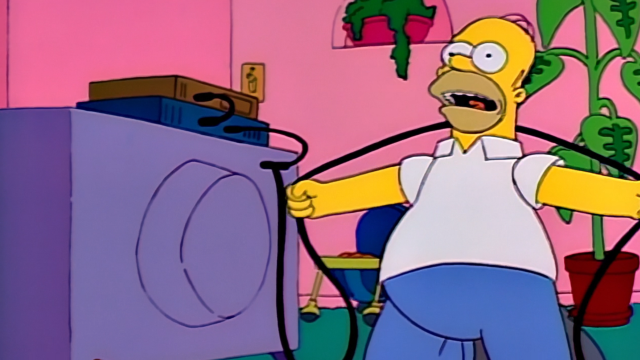Hi, Zac here, computer and TV cable connoisseur. I love going down a rabbit hole of talking about different kinds of cables, mulling over long ethernet and HDMI cables in the past, and why they’re not as bad as many people think they are. Now, I want to go over the differences between HDMI and Display Port cables, two different visual output cables that achieve similar results with different applications.
Let’s talk about when you’d use either and which one is better than the other.
What’s the difference between HDMI and Display Port?
If we’re speaking generally, HDMI is mostly used for TVs and Display Port is mostly used for computer monitors, however, there are computer monitors that operate via HDMI, or by a USB-C-to-HDMI or Display Port cable.
But this can quickly become more complicated. Historically, the reason for the divide between monitor and TV use was because of the kind of information delivered across the cable.
A HDMI cord can deliver a video output, as can a Display Port, however, an HDMI cord can do it while also transmitting sound. Meanwhile, Display Port can deliver video output at higher refresh rates, translating to a smoother experience.
In the past, this has meant that, in professional settings where you might want a smooth display on your work computer, you’d use Display Port, while transmitting sound through separate devices like speakers. If you’re using an external DVD player or gaming console on your TV, you’re able to transmit this through HDMI. Additionally, if you want to play sound through your monitor, you can do this through an HDMI port, however, you should be aware of the lower maximum refresh rates.
But with recent developments across both technology types, the lines have begun to blur. Newer versions of Display Port can carry audio signals, and newer versions of HDMI can deliver higher refresh rates while retaining higher picture resolutions (to a maximum of 60hz at 8K, or 120hz at 4K).
Despite these changes, you’re still more likely to come across HDMI cords on a TV, and Display Ports in the back of a graphics card or motherboard on a PC.
Is HDMI better than Display Port?
Is there a clear ‘better’ cable? No, because these cables are used in two different scenarios. That being said, Display Port can achieve higher refresh rates, but you’re unlikely to see the benefits of this in most circumstances (perhaps in gaming if you have an expensive computer system or if you’re a graphics designer that needs quick video response times). Additionally, both cables are priced roughly around the same point, so cost isn’t really an argument that can be made.
I would urge you to, however, investigate whatever the primary display output your monitor requires. A previous monitor that I owned, for example, required a Display Port cable to function if it were the primary monitor, although if it were the secondary monitor, an HDMI cable could work (don’t ask me why, it was a weird monitor).
The bottom line is that, for most people, you’re unlikely to see the benefits of those higher refresh rates – but you should read the manual of your display to see if you need one or the other.
Image: Disney
This article has been updated since it was originally published.
